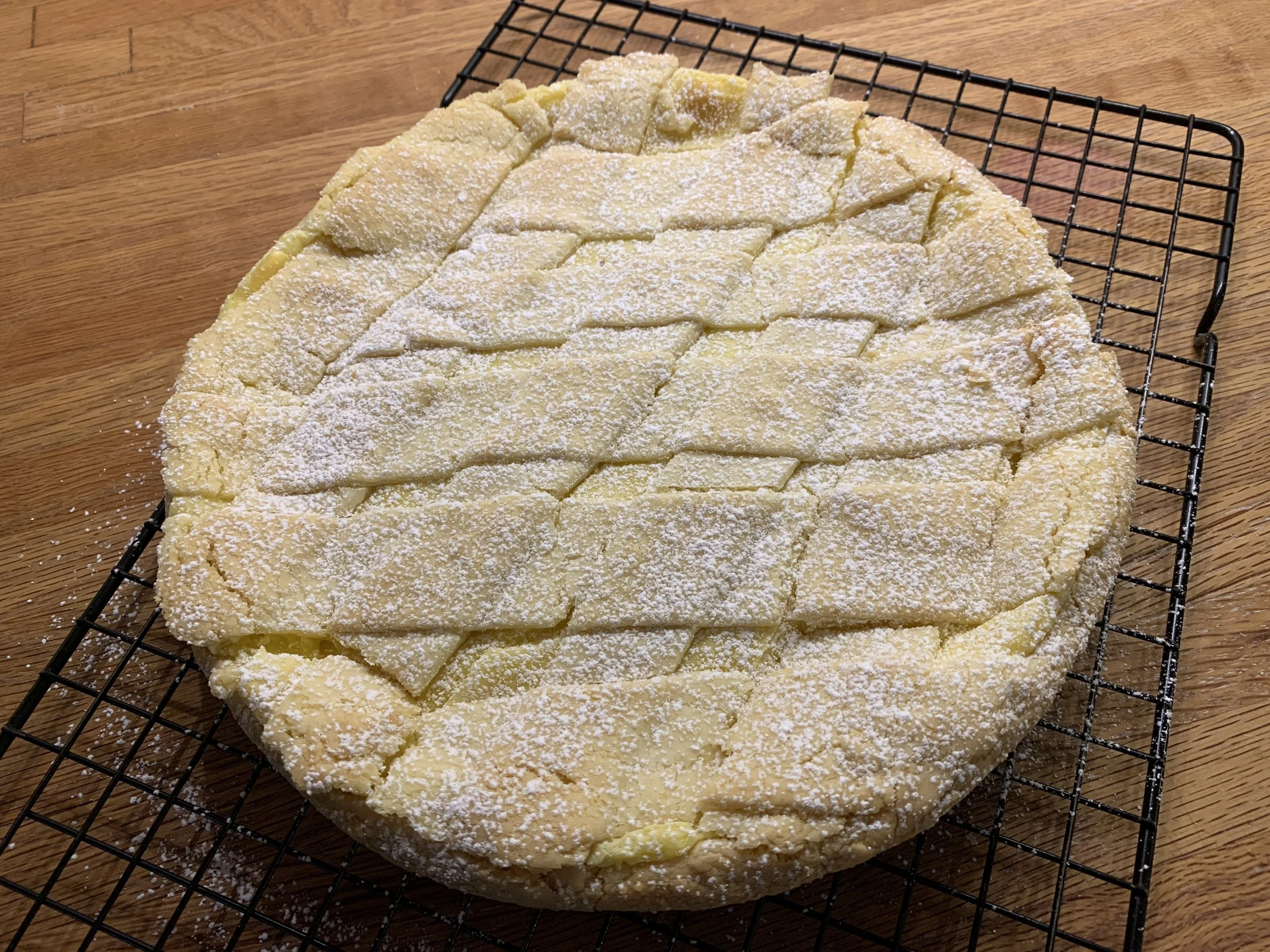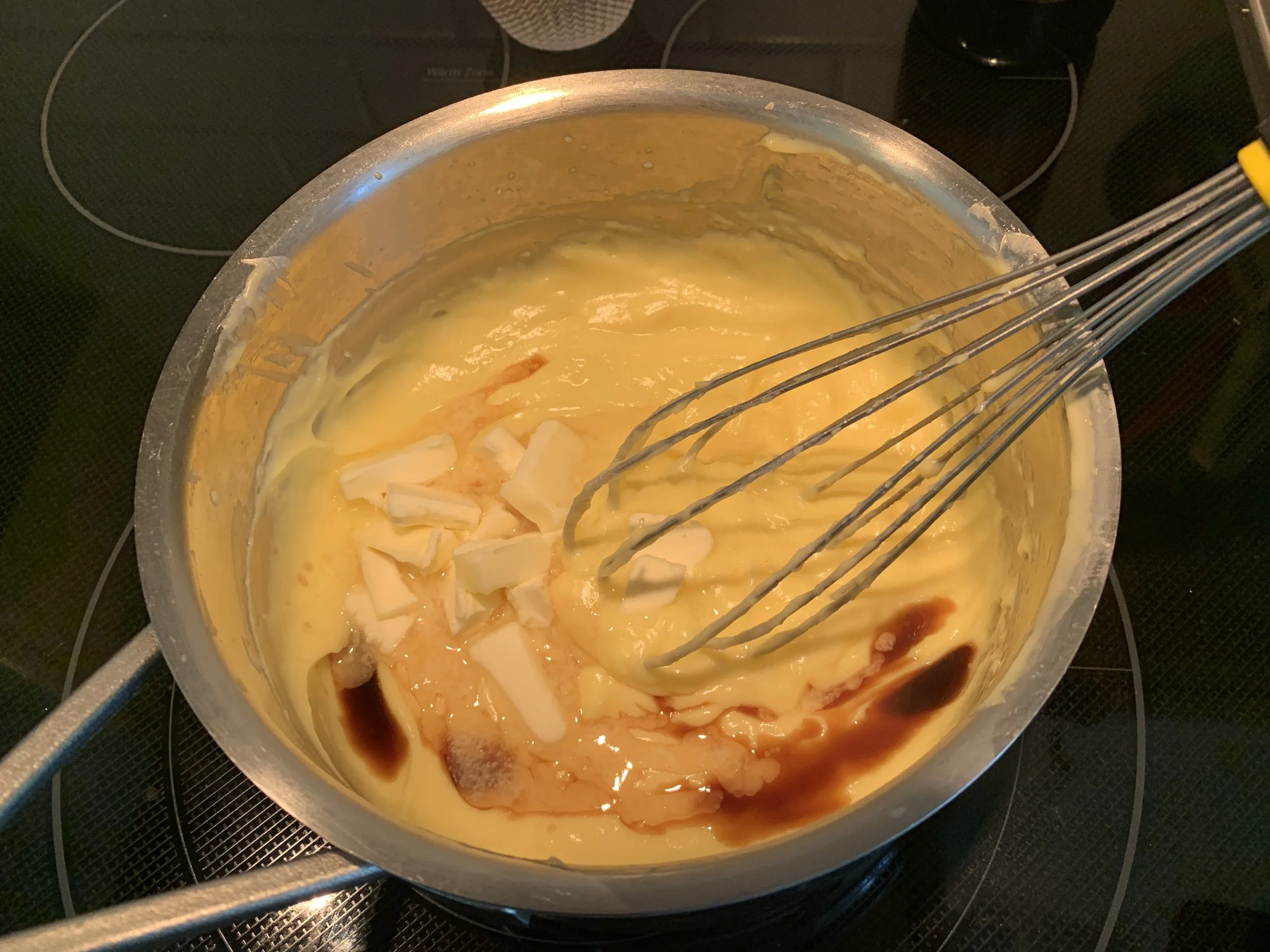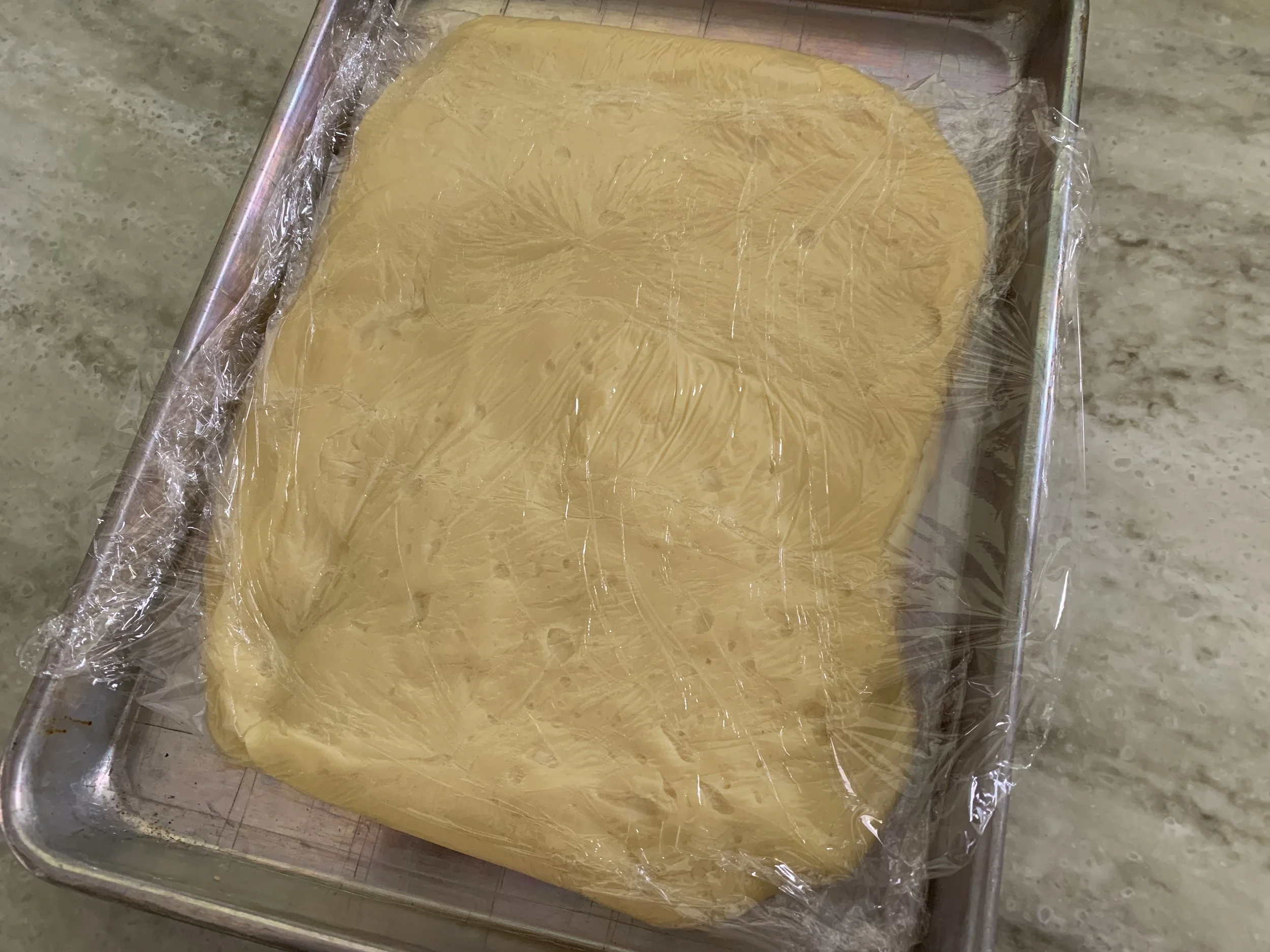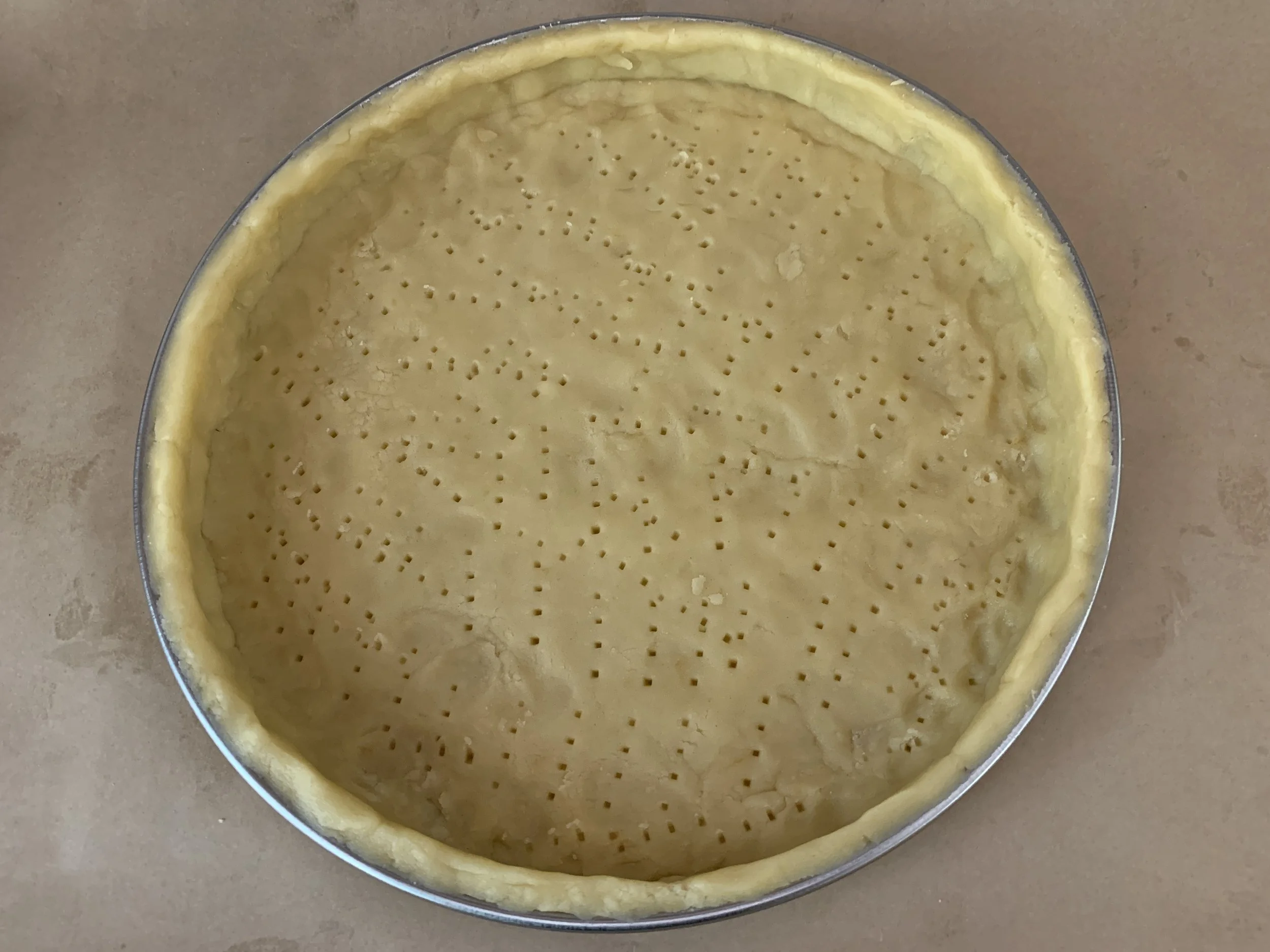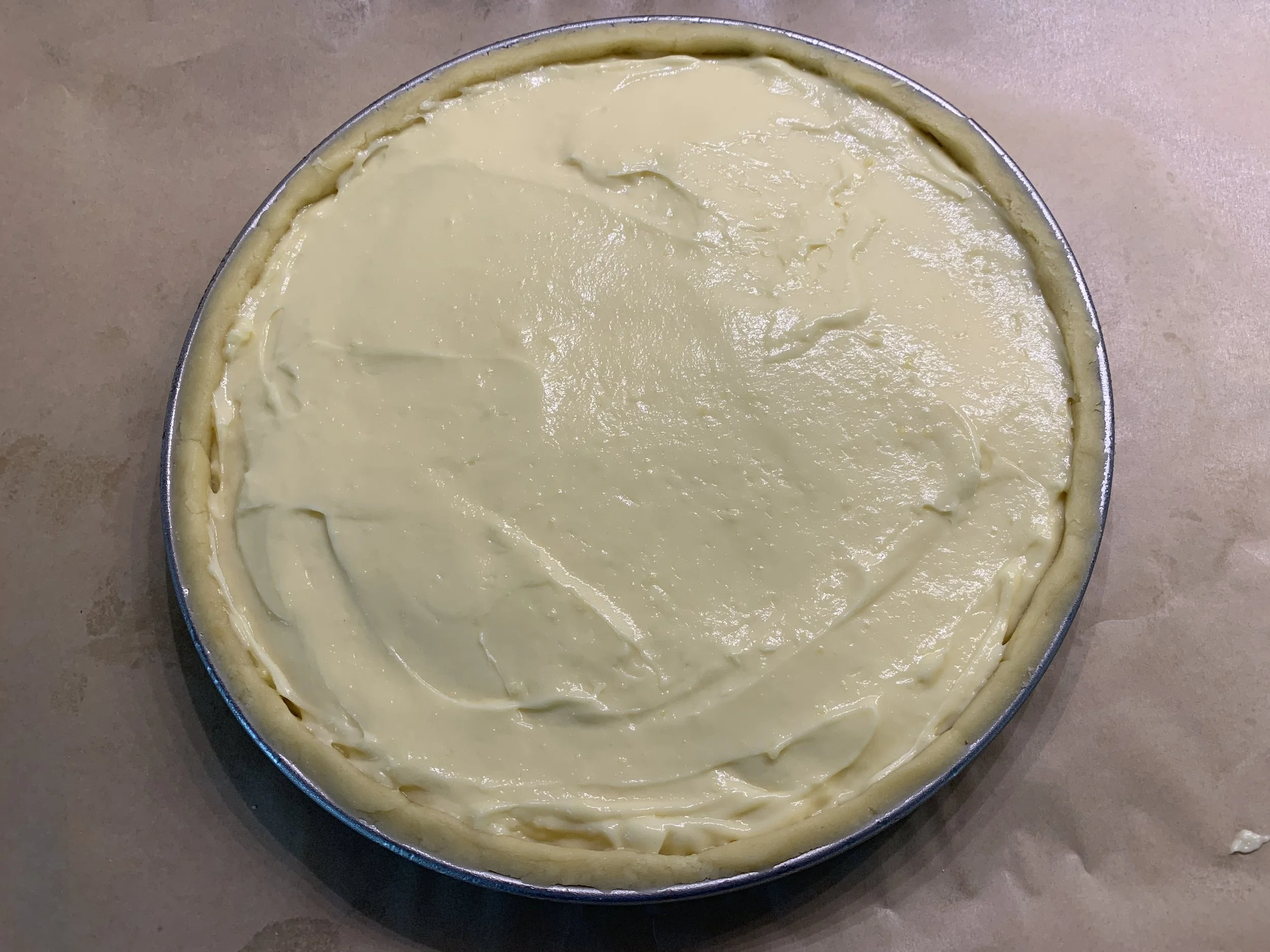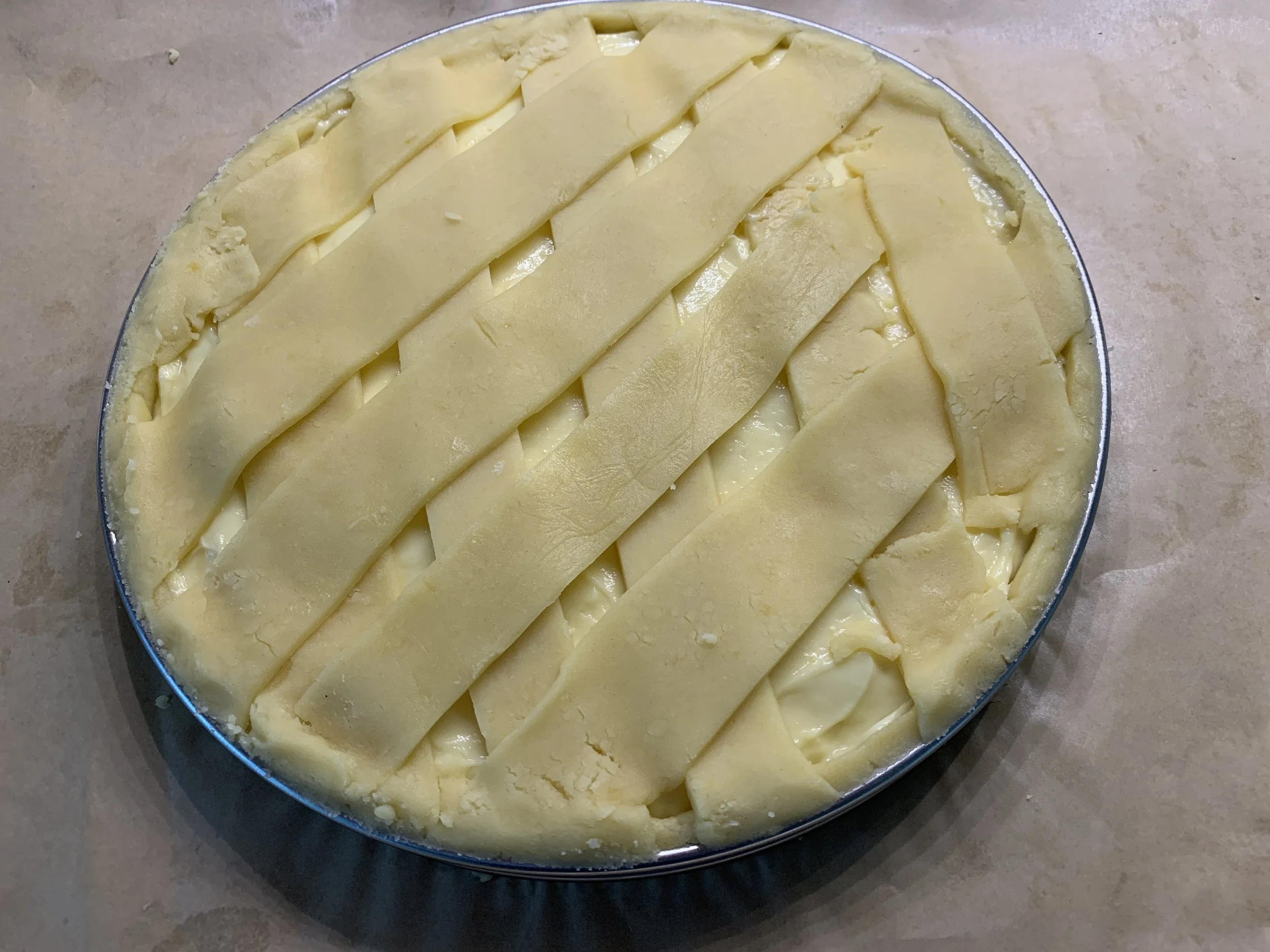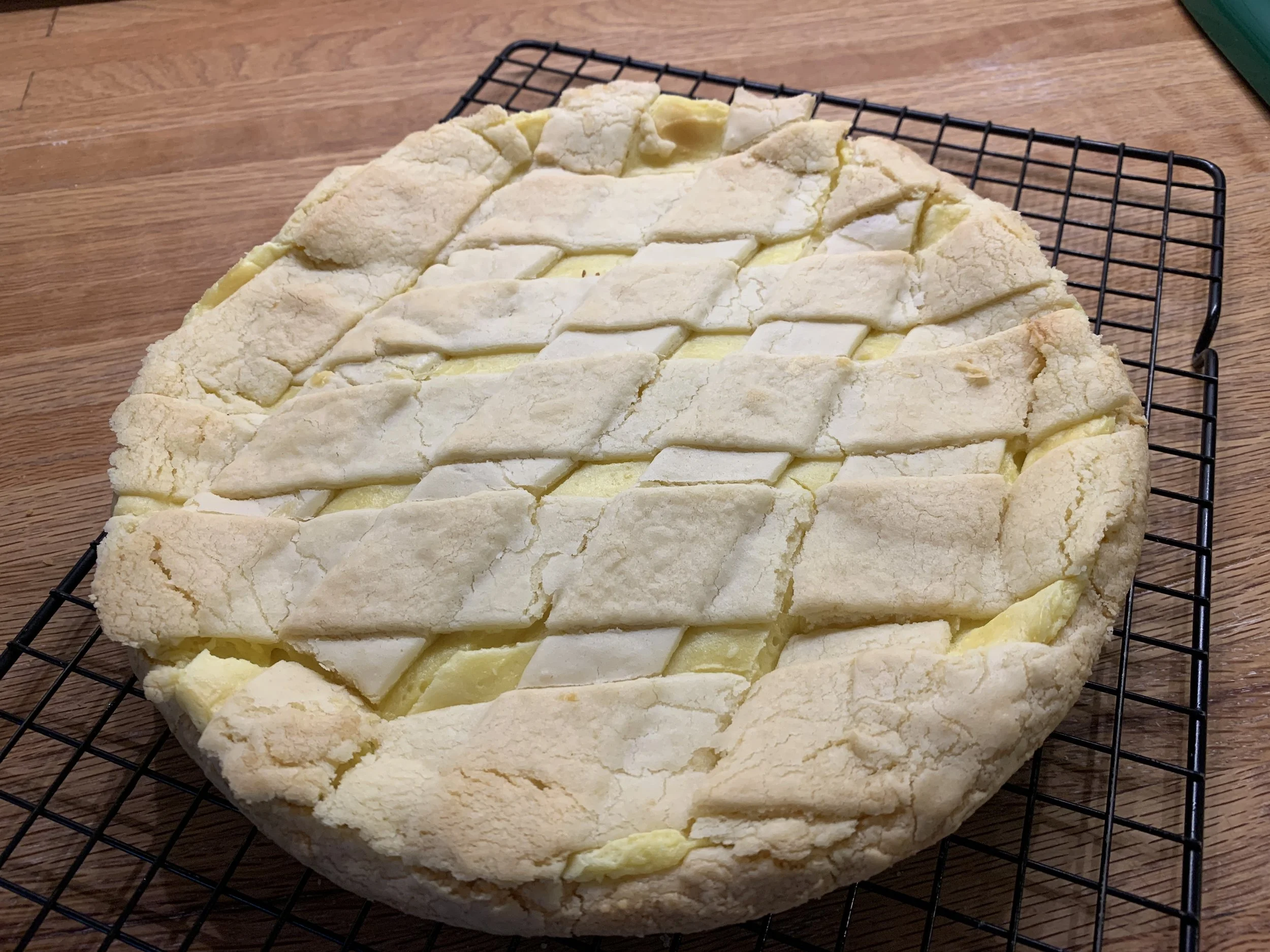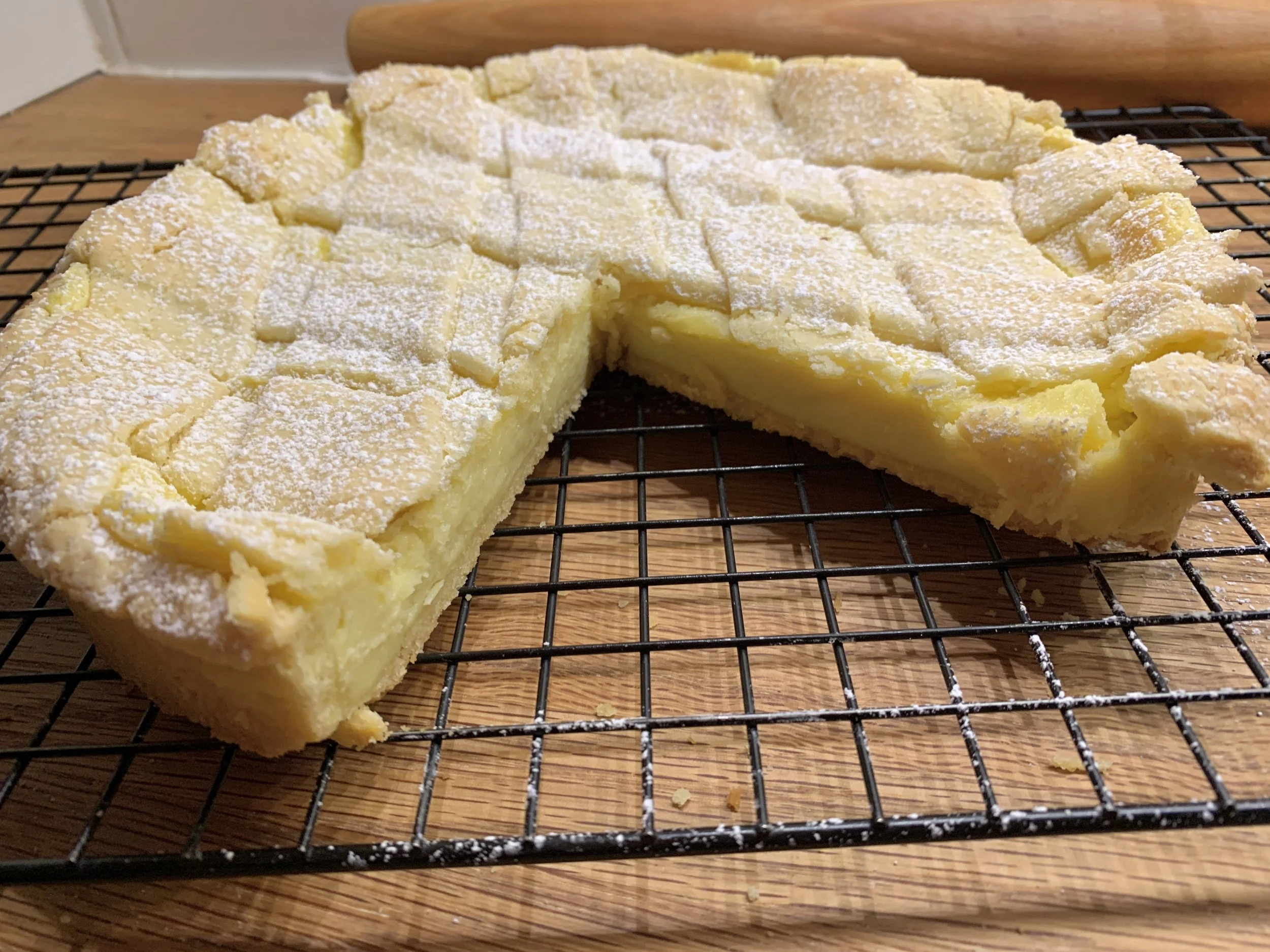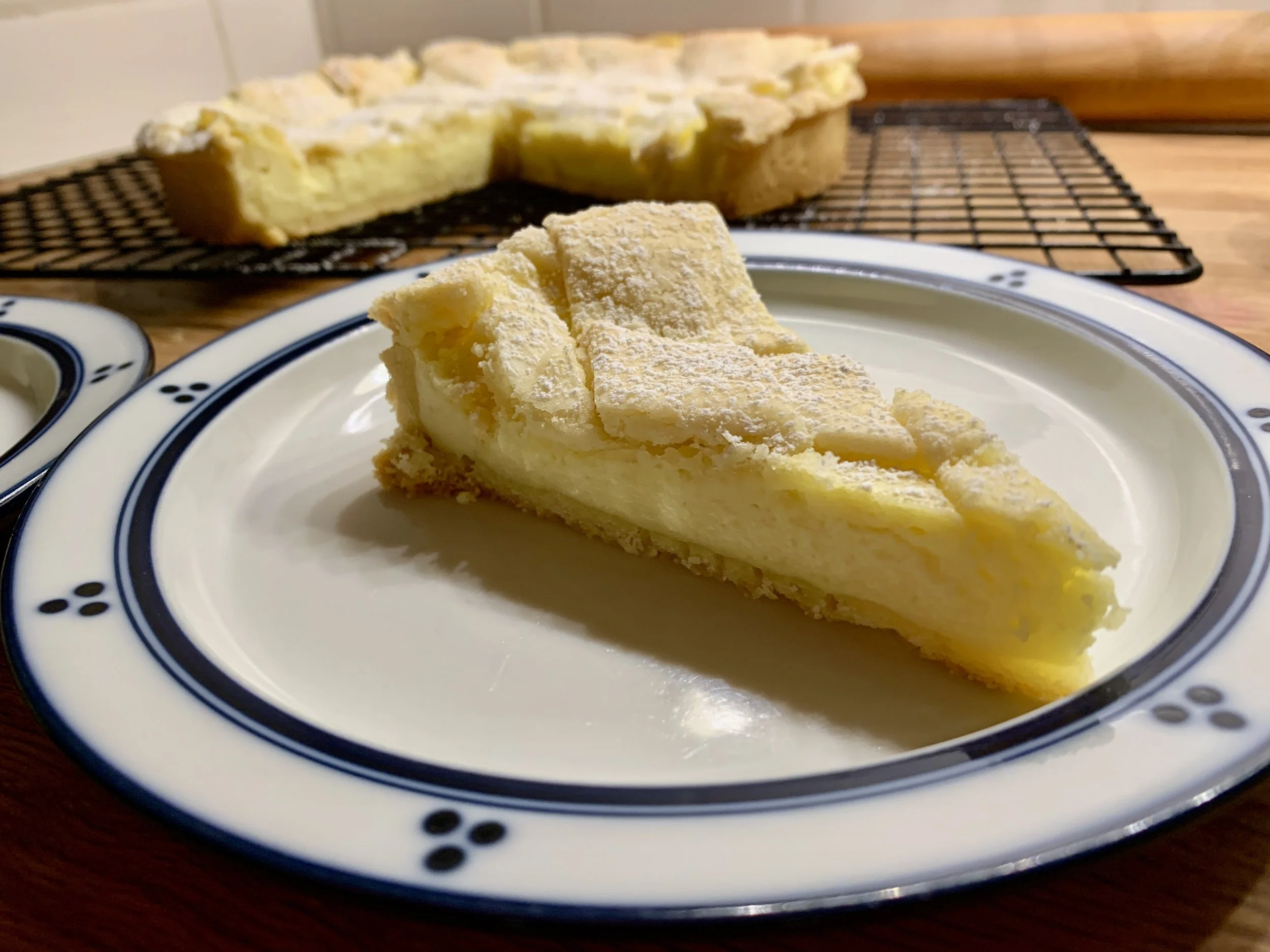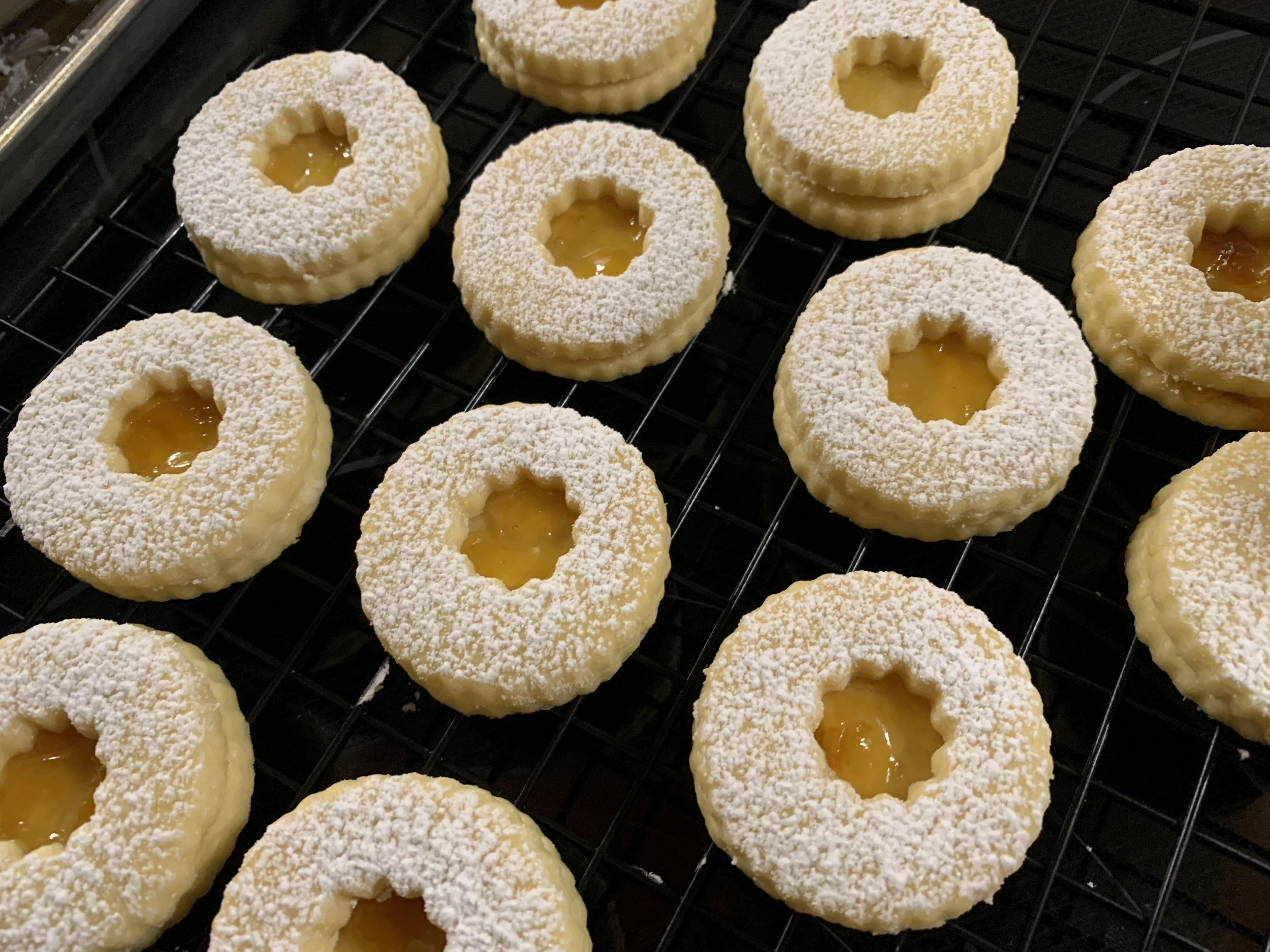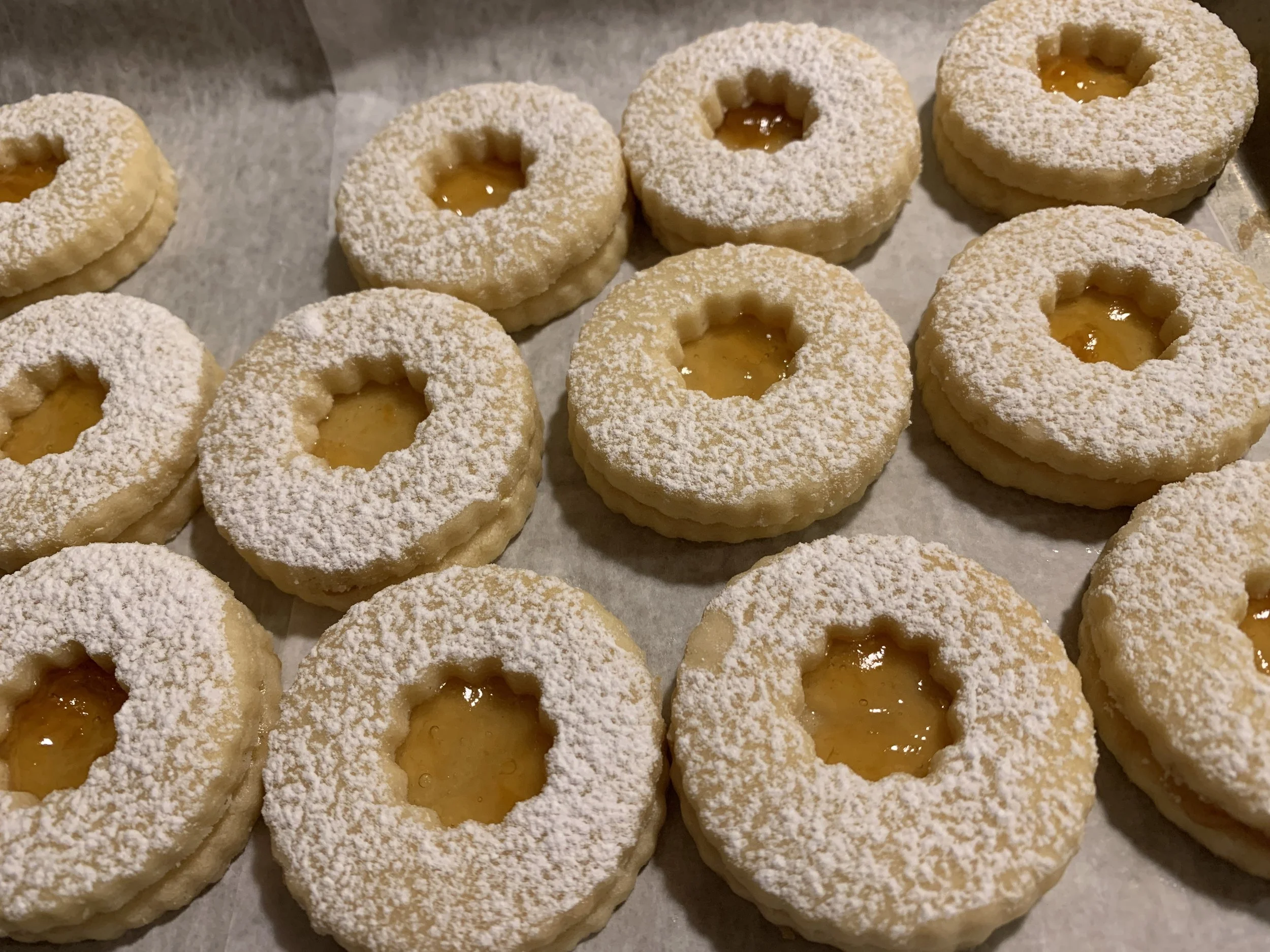Crostata della Nonna (and one more)
/Continuing on my Italian kick, this crostata is as classic to Italians as apple pie is to Americans. Based on another recipe from the book “Dolci” by Renato Poliafito (remember the peach semifreddo?), the name is literally translated as “grandmother’s tart”. A tender, buttery, hint of lemon short crust, a pastry cream filling topped with a lattice of the same crust. Oh my.
A quick note on vocabulary. I’ve seen this type of tart referred to as either a crostata or a torta with some differences in the variables that make it what it is. Some say a crostata may have a more chunky fruit filling and no top crust, similar to a French galette or may be filled with pastry cream and topped with a lattice crust (as in this case). Torta might refer to either a cake or tart-like creation that can be either sweet or savory. In Spanish torta refers to a crusty roll or bread sandwich.
Not too gloss over it too much but I don’t think I’ll worry about which word I use, especially with regard to Italian pastries in the tart family. If you travel a fair amount, you’ll find similar treats in other countries in Europe, Scandinavia and beyond - everyone has their own take on a good thing!
Now back to our topic - just two components and a pretty simple assembly (the lattice can be a bit tricky), the pasta frolla dough bakes up light and tender, a true match for the luscious pastry cream filling. The full dough recipe makes about 750 g of dough of which you’ll use about 450 g, give or take. It’s somewhat akin to my favorite Breton dough but even a bit more ethereal.
Both components can be made a day or two ahead. Then it’s a matter of assembling and baking. I won’t go through the steps for the dough here - just check out the recipe. Any extra dough can go to making cookies (end of post!).
I used my favorite recipe for the pastry cream - 500 ml whole milk, 100 g sugar, 5 yolks and 50 g corn starch (or a mix of 32 g cornstarch and 18 g flour), 1.5 teaspoons vanilla, 40 g unsalted butter.
Heat the milk with half of the sugar. In a separate bowl blend cornstarch/flour, the other half of the sugar with the egg yolks, whisking until well blended. Temper the hot milk into the yolk mixture then return all to the pan. Continue to cook while whisking constantly until thickened and see a couple of “blub, blubs on the surface. Then blend in the butter and vanilla.
I line a quarter sheet pan with plastic wrap (long enough to bring up over the cream), transfer the hot cream to the pan, spread into a layer (more surface area, quicker cooling) then cover with the plastic as you expel any air bubbles. Chill in the fridge until cool.
You’ll most likely use about 2/3 of the cream, but you could always bake up some choux puffs and fill ‘em right up with what’s left.
Heat your oven to 350ºF. Line a half sheet pan with parchment. Have a 9” tart ring at hand. Using about 280-300 g of chilled pasta frolla, roll the dough out to a thickness of about 3-4 mm, lightly flouring the work surface and lifting the dough periodically to keep from sticking. Line the tart ring, creating a rim along the top of the ring. Prick the bottom all over with a fork.
Remove the pastry cream from the fridge and give it a paddling in a stand mixer to smooth it out. Spread the cream into the lined ring to just below the top edge of dough. Smooth the top. Save any extra cream for another use.
Using another 170 g or so of dough, roll it out and cut strips about 3/4 - 1 “ wide. The dough is fragile so if it gets too warm and difficult to handle, place the strips on a sheet pan and pop them in the fridge to firm up.
I’m sure many of you are expert pie makers and can whip off a woven lattice crust licket-y split. It takes a bit for me. I didn’t even try to weave them - just laid some across the cream then the rest at a bit of a diagonal. You can see my patching here and there - it’s OK - it all comes out in the end. Seal the dough strips along the edges.
Bake at 350ºF for about 40 minutes until the dough is golden and the pastry cream is set.
Let cool, gently lift the tart ring off and give it a nice dusting of confectioner’s sugar for that extra special look. It does something for it don’t you think?
Rustic and ready
So delicious as an accompaniment to afternoon tea or coffee or for a simple, yet tasty dessert. Maybe a few fresh berries on the side?
Leftovers keep covered in the fridge for 3-4 days.
I had planned on a separate post on occhi di bue (bullseye cookies) but thought I’d just tack on a few images for you here. Made with the same pasta frolla dough, simply roll out the dough, cut your desired size rounds then, with half of those rounds, cut out a center bullseye (re-roll the center cutouts for more cookies or bake them for snacks!)
Bake at 350º F about 20 minutes. Let cool then spread a thin layer of apricot jam (or other jam of your choice) on the full rounds, pop them back into the oven for 5 minutes or so to set the jam. Then top with the bullseye rounds. Cool and give them a dusting of confectioner’s sugar. Enjoy!
Until next time (waiting for the autumn colors to burst forth)!
This one’s from 5 years ago at this same time of year. Back then we were deep into Covid and Steve and I wanted to get out of the house. We took a drive to see some autumn color and stopped at Meinert Park, a Muskegon county park on Lake Michigan. Of course I had to put my toes in the water!
AAAAHHHHH!

